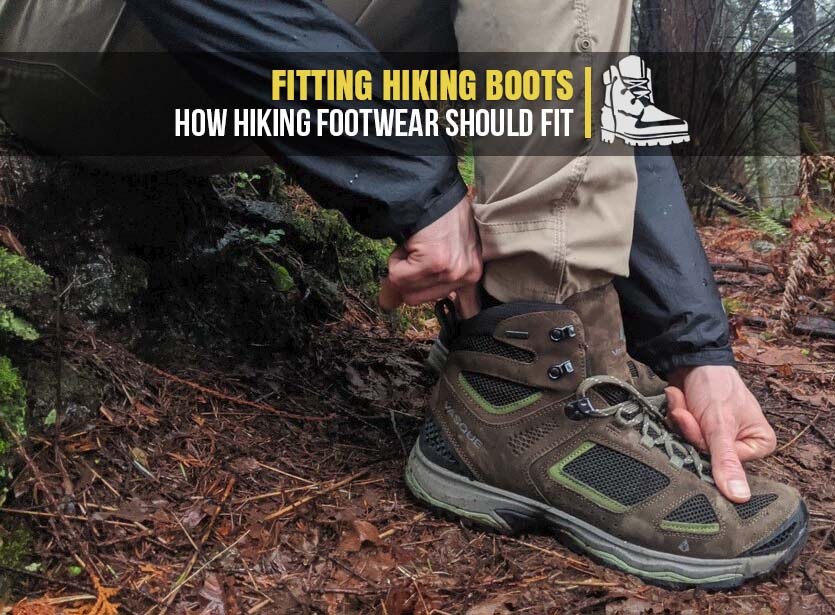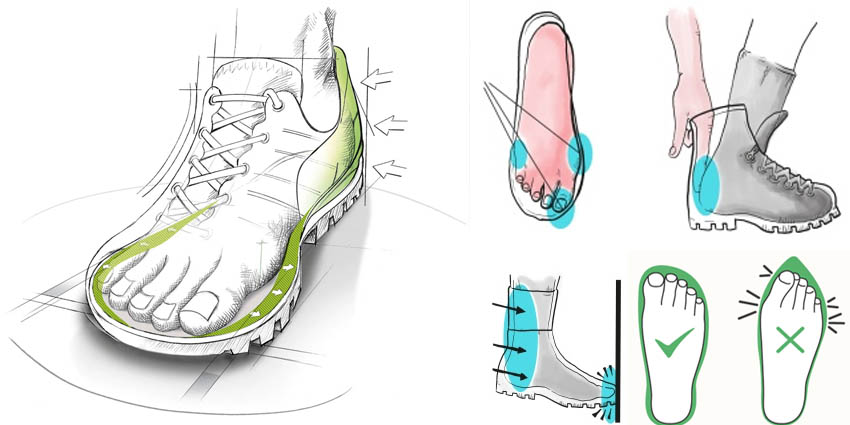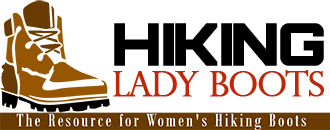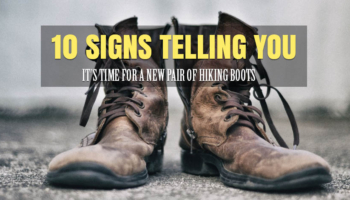
No matter how great a pair of hiking boots looks on paper, you won’t know if it’s the best for you until you put it on. Even if some blisters, when wearing the boots for the first time, won’t pose a problem, in the long run, wearing the wrong pair of hiking boots over and over can cause various issues and even aggravate the ones you’re currently dealing.
Some health conditions (back problems, knee pain) may occur from not wearing the proper hiking boots. Should you have weak ankles, not wearing boots with ankle support may cause back pain, hip pain in time.
No matter how much you like your hiking boots or how great they seem to be, it would help if you always thought about proper fitting before anything else. Reliable hiking boots will require little to no break-in period, as materials, design, and technologies improved over the years.
Why is fit so important?
Hiking boots come in a great variety of prices, but it’s wise to pay the extra buck for a fair and durable pair right from the start. As you can see, the selection process is tedious, and you don’t want to go through it any time soon. Do due diligence, ask around, read the reviews, learn about the materials- practically become a professional in the footwear industry before buying hiking boots, especially if hiking is essential to you.
We are all different, and our feet differ too. Even if the footwear industry has developed so much, looking into technologies that create the most comfortable and performant hiking boots, they still cannot make perfect boots for every single hiker out there. If you have wide feet, but read the positive review of a hiker with narrow feet, you will most likely end up with a wrong pair of boots. You will feel thousands of pressure points, develop blisters, and have to deal with the worst pair of boots. You don’t want to have too large boots either, as you will lack support and stability. You may think that downsizing would solve the problem, but then it’s the boot’s design and shape that is wrong for you. Getting a smaller size of the model will only cause other issues, with blisters and hot points as the most common.
It would help if you always read the description and technical specs of the boots you’re buying. Just because that model is for wide feet doesn’t mean that all models from that particular manufacturer will be wide-feet.
Insoles can make all the difference!
Most reliable hiking boots come with easy to remove insoles. You can make an idea about how your foot feels in the boot by placing it on the insole. Bend your knee forward a bit, noticing if you have 15mm (0.59in) between the end of the insole and the end of your longest toe. It would help if you had this gap so that your foot can move forward when you’re descending, allowing your toes not to touch the front. If you don’t have this difference, your toes will keep on touching the boots, which causes pain and affects the durability of the footwear (especially if it’s waterproof).
Waterproof hiking boots usually come with gore-tex lining, which is efficient, but very thin. When your toe keeps on banging into the front of your boot, it’s only a matter of time until it breaks it.
However, the insole gives you only some of the information you need for fitting, and it’s mostly about the length.
How do you know that hiking boots are a good fit?

When we talk about fitting hiking boots, we should speak of four aspects:
Arch and heel zones
Good hiking boots provide a snug fit in the heel and arch area, without any evident baggy zones. You shouldn’t feel a lot of pressure nor squeeze. If you’ve been hiking for some time, you will know what snug fit for the arch and heel truly means.
Toes
Reliable hiking boots should provide generous space for your toes so that they freely move. Complete freedom for movement of your toes is required for the best comfort. Many inexperienced hikers or hikers who have always worn the wrong pair of boots find it weird to have a lot of space for wiggling their toes.
It all comes back to the 15mm difference you need to have on the insole for the best comfort. When your toes don’t have the 15mm, they will get sore when you start descending, damaging the boots at the same time.
We know that it’s difficult to comprehend why your toes should have so much space, especially since street footwear requires a different fit in the toes areas.
Forefoot/just before your toes
Boots that are too narrow will cause a lot of pressure on your toes, which is anything but pleasant or comfortable. If, on the other hand, this area is too wide, the boot will feel baggy and unable to keep your foot in place.
Did you ever think to take a look at the laces?

Many inexperienced hikers believe that laces should be rugged and remain knotted while you’re hiking. However, laces are extremely important for the best fit of your boots. They should stay tight the whole way up the boot.
If you’re in a hurry or don’t pay attention to details, you pull the top of your laces, trying them. By doing so, the lower part of the boot will not become secure and snug on your foot. When you’re tying the laces properly, your ankle and heel are protected, supported, with a lower risk of rubbing or heel lifting.
As you’re trying your hiking boots, you should see if the heel is lifting up or down as you’re walking. Even if the hiking boot won’t hold the heel very tight, a small amount of movement is accepted, as long as it’s not significant and easy to forget about.
If you can climb up/down some stairs, you should try climbing up/down with the boots. While climbing up, the heel will lift, whereas climbing down should provide plenty of room for your toes to move. If your toes touch the front of the toes, move on to the next pair of hiking boots. If your toes touch the front of the shoes in a couple of minutes of you climbing down the stairs, imagine how it will be while descending a hill.
Our final words of wisdom
Unless you have custom made hiking boots, no manufacturer can guarantee that a specific model will fit you perfectly. Sure, some features, designs, and shapes can increase the chances for a model to suit you (and that’s why women models are different from male models), but only when you put the boots on you feel how they truly work.








